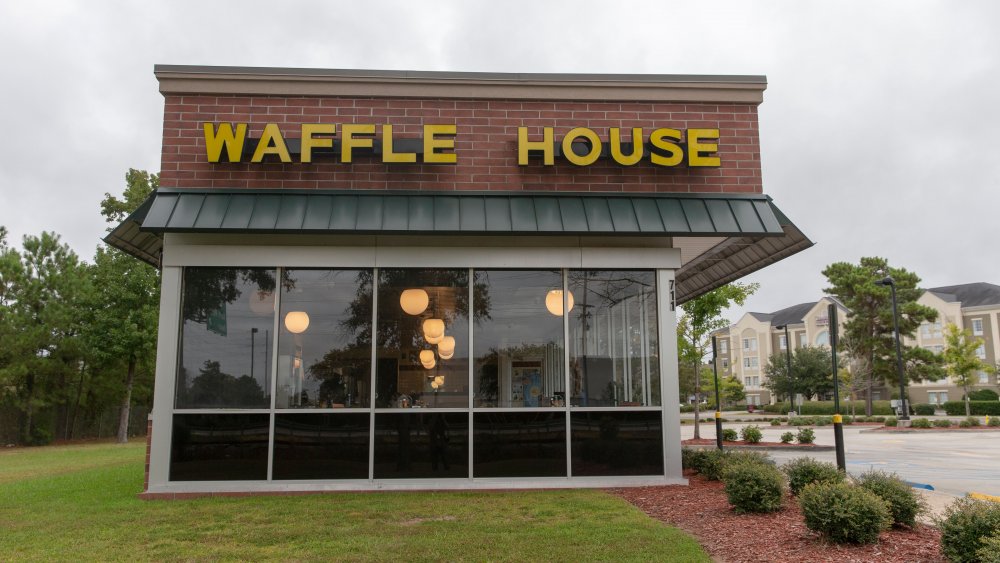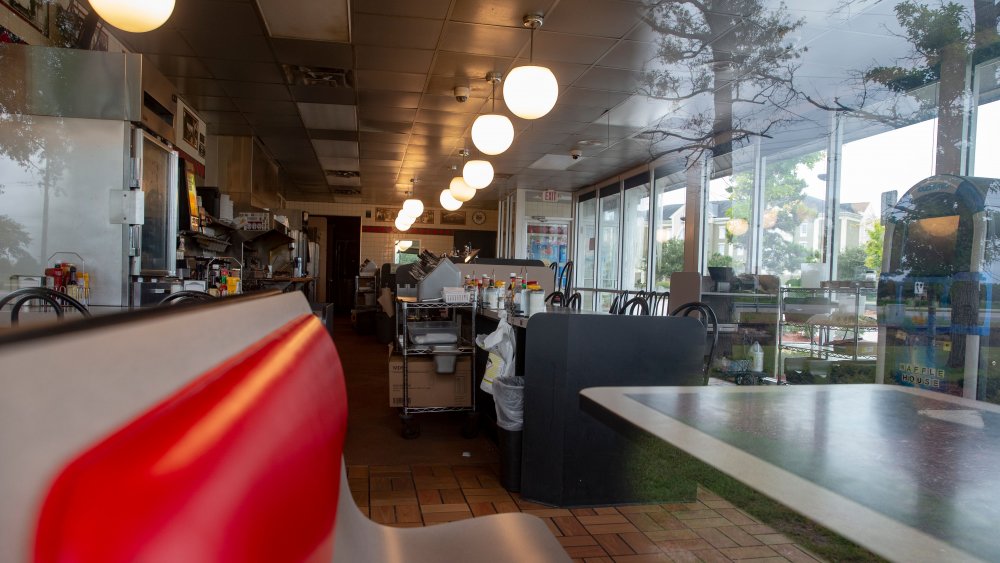The Truth About The Waffle House Index
Waffle House is an institution in parts of the country. Established by Joe Rogers, Sr. and Tom Forkner in 1955, the restaurant first opened in what is now the City of Avondale Estates. Today, the chain has over 1,600 locations across the country and the original Waffle House is a museum open by appointment, with a Georgia Historical Society plaque honoring its role in American culture (via AJC). Because of its locations, Waffle House has also evolved to become more than just a diner- it's lent its name to an index that measures how serious a national calamity is and how badly a community has been hit.
The informal "Waffle House Index" was coined in 2011 by the Federal Emergency Management Agency (FEMA)'s administrator, Craig Fugate, after the Joplin tornado struck Missouri in 2011, causing $2.8 billion in damage. And while 158 people died in the disaster, both of the town's Waffle House branches stayed open (via Accuweather). As Furgate tells NPR, "If the Waffle House is open, everything's good."
Waffle House's disaster preparedness plan has received praise
Because the Waffle House is open 24/7, Accuweather says it has developed a reputation for dealing with disasters in an efficient and effective way. It even has "Waffle House jump teams" that are able to reopen a restaurant after a natural disaster has struck, and the chain also has different menus it can roll out based on circumstances. Waffle House's disaster preparedness has earned it praise from Panos Kouvelis, the Director of the Boeing Center for Supply Chain Innovation as a "role model" for disaster preparedness.
Waffle House even has a ranking scheme that can determine how badly hit an area can be. Operations are "Green" if the restaurant has sustained little damage to no damage, has full power, and has a full menu. It is "Yellow" if the restaurant is low on food supplies (which means it can only offer a limited menu) and has limited power. And it is "Red" when the restaurant is actually closed because of damage or severe flooding, which is rare but does happen.

